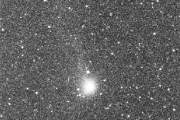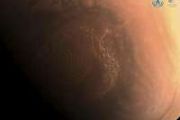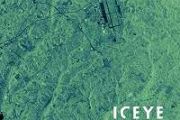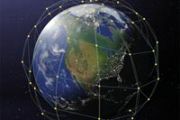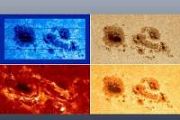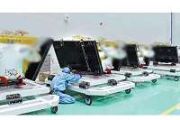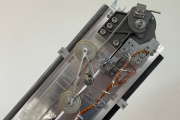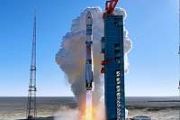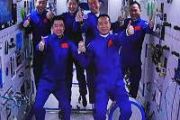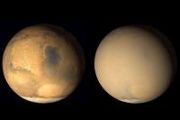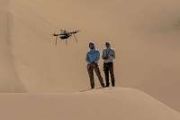
Copernical Team
Voyager 1 nearly 'one light day' out from Earth
 NASA's Voyager 1 spacecraft has recently resumed communication with Earth following a brief pause that drew attention to the mission's ongoing challenges and remarkable resilience. On Oct. 24, engineers re-established contact after the spacecraft unexpectedly switched off one of its two radio transmitters, an issue likely prompted by Voyager's fault protection system. This system autonomously ma
NASA's Voyager 1 spacecraft has recently resumed communication with Earth following a brief pause that drew attention to the mission's ongoing challenges and remarkable resilience. On Oct. 24, engineers re-established contact after the spacecraft unexpectedly switched off one of its two radio transmitters, an issue likely prompted by Voyager's fault protection system. This system autonomously ma Centaur Upper Stage Exhibit Honors Longstanding Contributions to Space Program
 An exhibit spotlighting the essential role of the Centaur upper stage in U.S. space operations was introduced with a ribbon-cutting ceremony on October 18 at Los Angeles Air Force Base, the home of Space Systems Command (SSC). Designed to inspire and inform future Space Force Guardians, the exhibit features the Centaur III upper stage and its RL10 rocket engine, both of which have been instrumen
An exhibit spotlighting the essential role of the Centaur upper stage in U.S. space operations was introduced with a ribbon-cutting ceremony on October 18 at Los Angeles Air Force Base, the home of Space Systems Command (SSC). Designed to inspire and inform future Space Force Guardians, the exhibit features the Centaur III upper stage and its RL10 rocket engine, both of which have been instrumen From Contract Signing to Orbit in Just Ten Weeks Rocket Lab Marks 54th Electron Mission with Speedy Deployment
 Rocket Lab USA, Inc. (Nasdaq: RKLB) achieved a new milestone with the successful deployment of a satellite into Low Earth Orbit (LEO) for a confidential commercial client. This mission, titled "Changes in Latitudes, Changes in Attitudes," was launched from Rocket Lab's Launch Complex 1 in Mahia, New Zealand, at 11:54 p.m. on November 5, 2024.
Notably, this mission marked Rocket Lab's 12th
Rocket Lab USA, Inc. (Nasdaq: RKLB) achieved a new milestone with the successful deployment of a satellite into Low Earth Orbit (LEO) for a confidential commercial client. This mission, titled "Changes in Latitudes, Changes in Attitudes," was launched from Rocket Lab's Launch Complex 1 in Mahia, New Zealand, at 11:54 p.m. on November 5, 2024.
Notably, this mission marked Rocket Lab's 12th NEOWISE concludes mission with re-entry but data continues to fuel discovery
 NASA's NEOWISE (Near-Earth Object Wide-field Infrared Survey Explorer) mission concluded as planned on Friday night when the spacecraft re-entered Earth's atmosphere, burning up after nearly 15 years in orbit. Originally launched in 2009 as the WISE mission, this resilient spacecraft dedicated itself to capturing infrared images of the sky and revealing unseen aspects of the cosmos.
Throug
NASA's NEOWISE (Near-Earth Object Wide-field Infrared Survey Explorer) mission concluded as planned on Friday night when the spacecraft re-entered Earth's atmosphere, burning up after nearly 15 years in orbit. Originally launched in 2009 as the WISE mission, this resilient spacecraft dedicated itself to capturing infrared images of the sky and revealing unseen aspects of the cosmos.
Throug Taurid meteor shower to reach peak visibility
 The Taurid meteor shower will be visible in the night sky for the next week for the phenomenon's annual appearance.
Earth passes through the debris left behind by comets every fall from September to November and the meteor shower was expected to be most visible beginning early Tuesday through Nov. 12.
The phenomenon gets its name from the path it travels across the sky from the c
The Taurid meteor shower will be visible in the night sky for the next week for the phenomenon's annual appearance.
Earth passes through the debris left behind by comets every fall from September to November and the meteor shower was expected to be most visible beginning early Tuesday through Nov. 12.
The phenomenon gets its name from the path it travels across the sky from the c Argonne to help drive AI revolution in astronomy with new institute led by Northwestern University
 The U.S. National Science Foundation and Simons Foundation have selected a group of institutions, including Argonne, to receive funding to establish an AI and astronomy institute called the NSF-Simons AI Institute for the Sky (SkAI).
Part of a groundbreaking effort to harness artificial intelligence (AI) to unlock the mysteries of the cosmos, the U.S. Department of Energy's (DOE) Argonne Nation
The U.S. National Science Foundation and Simons Foundation have selected a group of institutions, including Argonne, to receive funding to establish an AI and astronomy institute called the NSF-Simons AI Institute for the Sky (SkAI).
Part of a groundbreaking effort to harness artificial intelligence (AI) to unlock the mysteries of the cosmos, the U.S. Department of Energy's (DOE) Argonne Nation SAPA Pushes for Stricter Definition of 'Australian Business' to Enhance National Economic Complexity
 The Sovereign Australian Prime Alliance (SAPA), a coalition of major tech and defense entities, including NIOA, DroneShield, Macquarie Technology Group, AUSTAL, and Gilmour Space, has published a call for a tightened definition of "Australian business" to improve economic complexity and boost national sovereignty in government procurement.
The alliance, representing a collective capital ex
The Sovereign Australian Prime Alliance (SAPA), a coalition of major tech and defense entities, including NIOA, DroneShield, Macquarie Technology Group, AUSTAL, and Gilmour Space, has published a call for a tightened definition of "Australian business" to improve economic complexity and boost national sovereignty in government procurement.
The alliance, representing a collective capital ex Nearly EUR 10 Million Awarded for European Gravitational Wave and Particle Physics Initiative
 The University of Bonn and Johannes Gutenberg University Mainz (JGU), in partnership with the Institut de Fisica d'Altes Energies (IFAE) in Spain and Italy's Laboratori Nazionali di Frascati (INFN-LNF), have secured significant funding for the GravNet project through the European Research Council (ERC) Synergy Grants program.
This substantial EUR 10 million award supports the establishment
The University of Bonn and Johannes Gutenberg University Mainz (JGU), in partnership with the Institut de Fisica d'Altes Energies (IFAE) in Spain and Italy's Laboratori Nazionali di Frascati (INFN-LNF), have secured significant funding for the GravNet project through the European Research Council (ERC) Synergy Grants program.
This substantial EUR 10 million award supports the establishment Oxford space lab sends first human tissue samples to ISS for ageing study
 The first human tissue samples from Oxford's Space Innovation Lab (SIL) are now en route to the International Space Station (ISS) to support a study examining how space microgravity influences human ageing.
Researchers from SIL traveled to the Kennedy Space Centre in Florida, USA, where they integrated the samples into a payload ahead of the Tuesday morning launch (UK time). Housed within
The first human tissue samples from Oxford's Space Innovation Lab (SIL) are now en route to the International Space Station (ISS) to support a study examining how space microgravity influences human ageing.
Researchers from SIL traveled to the Kennedy Space Centre in Florida, USA, where they integrated the samples into a payload ahead of the Tuesday morning launch (UK time). Housed within Dance of particles tracked in neutron star collision yields insights into heavy elements
 The temperature of fundamental particles has been observed in the radioactive afterglow following a neutron star collision and subsequent black hole formation. This breakthrough provides scientists with an unprecedented look at the microscopic properties within these extraordinary cosmic events. By analyzing this fleeting, high-energy moment, astrophysicists at the Niels Bohr Institute at the Un
The temperature of fundamental particles has been observed in the radioactive afterglow following a neutron star collision and subsequent black hole formation. This breakthrough provides scientists with an unprecedented look at the microscopic properties within these extraordinary cosmic events. By analyzing this fleeting, high-energy moment, astrophysicists at the Niels Bohr Institute at the Un 






